What are the 5 worst hurricanes to ever hit the Wilmington area?
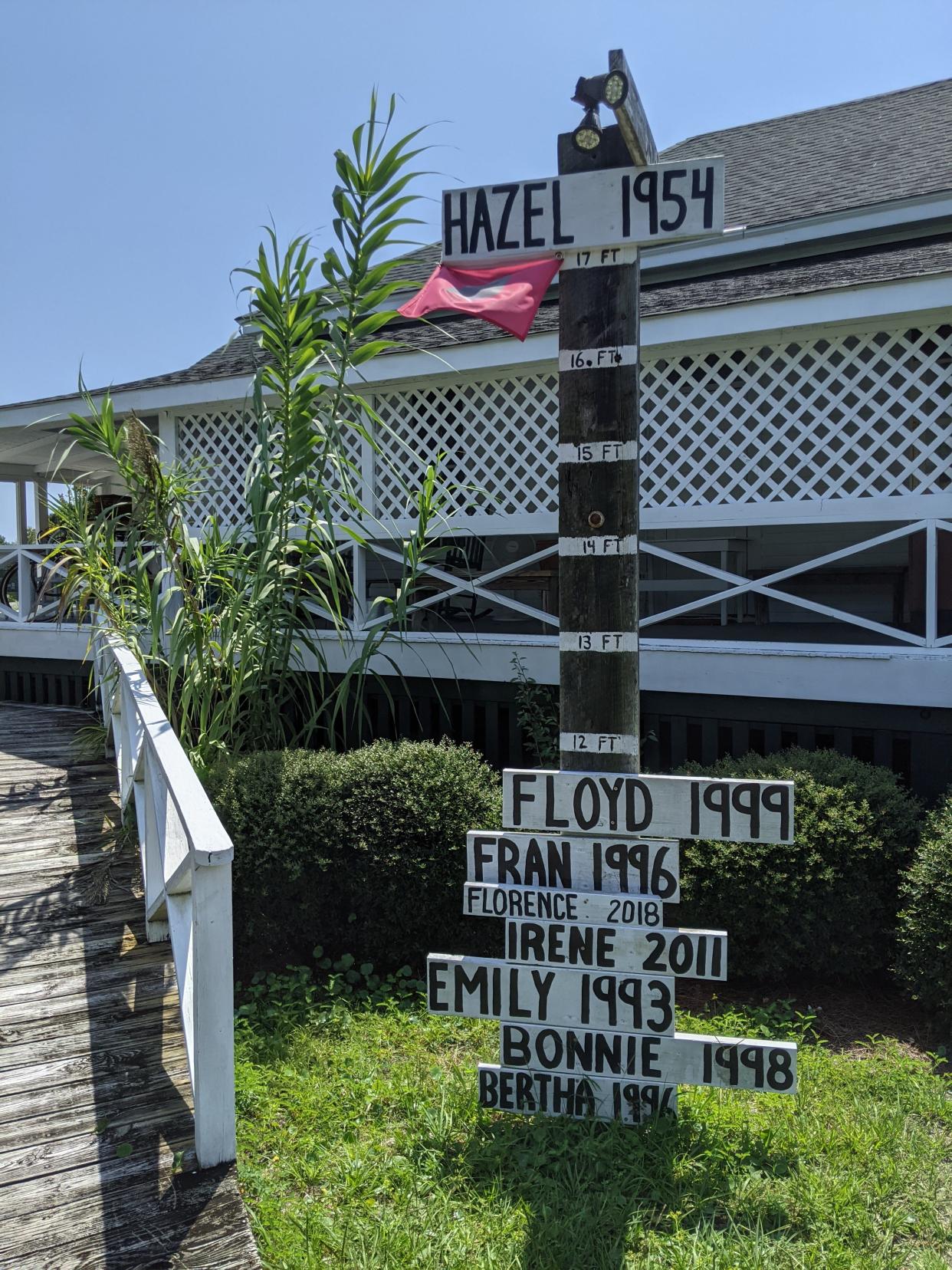
Tim Armstrong, meteorologist with the National Weather Service, has hurricane ranking down to a science.
While some focus on a hurricane's category, its death toll or monetary damage, Armstrong said all those factors are often associated with its atmospheric pressure.
"It seems the storms that had the lowest pressure have had the largest impacts," Armstrong said.
Using barometric readings taken since the 1870s, Armstrong compiled a list of Wilmington's 20 worst storms, based on atmospheric pressure.
Most hurricanes bring with them around 29 inches of atmospheric pressure, Armstrong said, but about a dozen times in 140 years Wilmington has experienced a hurricane with 28 inches.
"To be in a 28 is extremely unusual here," he said. "It's pretty rare to have that happen."
While atmospheric pressure doesn't take into account everything that makes a hurricane the "worst," Armstrong said it's a good starting point to determine Wilmington's worst hurricanes.
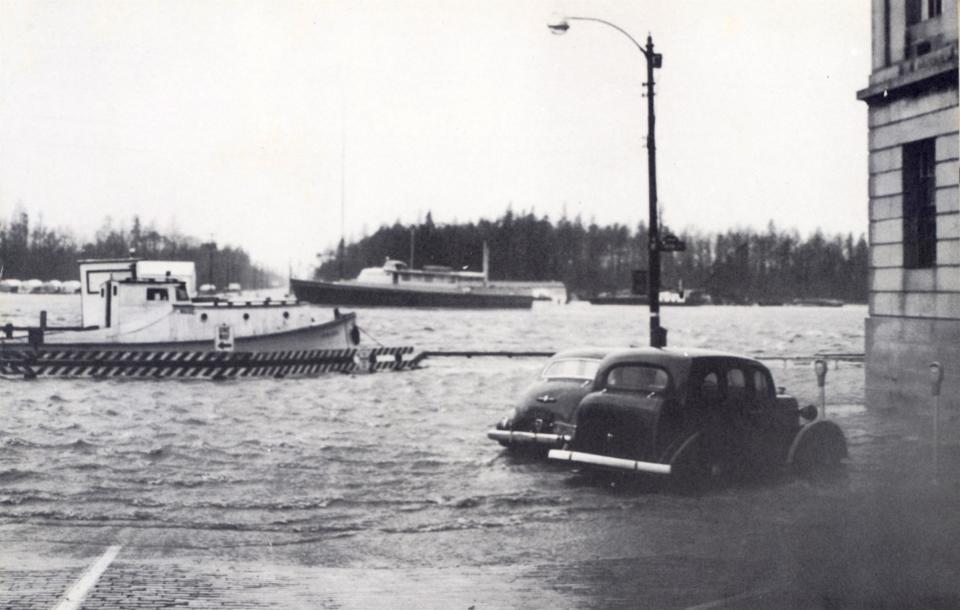
1. Hurricane Hazel - Oct. 15, 1954
Hurricane Hazel made landfall in Calabash, bringing an 18-foot storm surge and wind speeds over 140 miles per hour in Brunswick County.
The Category 4 hurricane killed 19 people in North Carolina and wrought more than $135 million in damage.
"That is by far the strongest hurricane on the historical record ever to have struck Brunswick County," Armstrong said.
More: A look at Hurricane Hazel
PHOTOS: The images of Hurricane Hazel
Hazel had just the seventh lowest barometric pressure in Wilmington history, at 28.68 inches, since it didn't travel directly over the city. However, it tops the list due to its widespread destruction, which was intensified by the hurricane coinciding with the highest lunar tide of the year.
![Carolina Beach, Oct. 15, 1954: Hotels, rooming houses and apartments were damaged, some beyond repair, by the fury of Hurricane Hazel. [Photo from 'Hurricane Hazel Lashes Coastal Carolinas: The Great Storm in Pictures'; caption by Beverly Tetterton]](https://s.yimg.com/ny/api/res/1.2/VuXAGRMKOZIIdrET1Toa8g--/YXBwaWQ9aGlnaGxhbmRlcjt3PTk2MDtoPTg5NA--/https://media.zenfs.com/en/star-news/6ae827a6062125076cfbc59423c33f89)
The National Weather Service notes just five of 357 buildings in Long Beach (now incorporated into Oak Island) remained after the hurricane battered Brunswick County beaches.
More than 15,000 homes were destroyed and according to a National Oceanic and Atmospheric Administration report, "every pier in a distance of 170 miles of coastline was demolished."
2. Hurricane Florence - Sept. 14, 2018
Hurricane Florence made landfall near Wrightsville Beach as a Category 1 hurricane, bringing slow moving downpours that caused flooding throughout eastern North Carolina.
Florence was the area's costliest and wettest hurricane on record. More than 23 inches of rain left Wilmington an island with highways flooded and impassable.
![Flooding from Sutton Lake washed away part of U.S. 421 in New Hanover County just south of the Pender County line in the aftermath of Hurricane Florence in 2018. [Matt Born/StarNews via AP]](https://s.yimg.com/ny/api/res/1.2/0jQsnvOmd7MlvZC_SCahVw--/YXBwaWQ9aGlnaGxhbmRlcjt3PTk2MDtoPTYwNQ--/https://media.zenfs.com/en/star-news/03c5b802613cae6eb7405c4c8a053e86)
"Wilmington recorded more rain from Florence than any other single weather event in the city's history," Armstrong said. It capped the wettest-ever year for Wilmington with more than 102 inches of rainfall.
While Florence is only the fourth worst hurricane in terms of atmospheric pressure, at 28.51 inches, the flooding caused catastrophic problems outside the direct impacts from the hurricane.
More than 450 people had to be rescued across Wilmington and more than 90% of New Hanover County was without power.
More: Born after Hurricane Florence, Pender group emerges to help weather the next storm
More: 3 years since Hurricane Florence burst its dams, will Boiling Spring Lakes get lakes back?
More: Hurricane Florence recovery still in progress
Due to power outages, a water treatment plant spilled 5 million gallons of partially treated wastewater into the Cape Fear River. In Pender County, thousands of dead marine life were washed onto beaches and residential areas along Interstate 40.
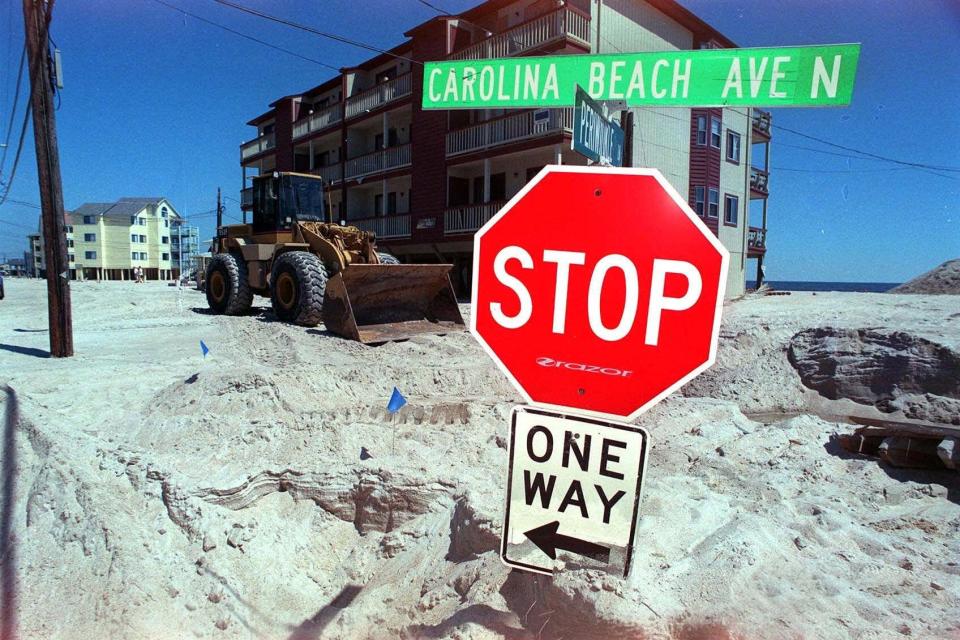
3. Hurricane Floyd - Sept. 16, 1999
Hurricane Floyd made landfall on the Cape Fear as a Category 2 hurricane, bringing wing gusts measured over 130 miles per hour near Wrightsville Beach.
For years Floyd was the most expensive hurricane and had the highest rainfalls, until Hurricane Florence. It brought storm surges that peaked around 18 feet and over 24 inches of rain to parts of the state, killing 36 people and costing more than $6 billion in damage.
More: Remembering Hurricane Floyd
More than 80,000 homes were damaged or destroyed, and up to four feet of sand was excavated from Carolina Beach Avenue North, according to the National Weather Service.
Floyd had the lowest atmospheric pressure of any hurricane on record, measuring 28.34 inches.
4. Hurricane Fran - Sept. 5, 1996
Hurricane Fran made landfall near Bald Head Island as a Category 3 on the heels of Hurricane Bertha, which weakened the area's protective dunes. Fran then washed away up to 30 feet of beachfront in some places, according to the National Weather Service.
Winds in Brunswick County reached more than 115 miles per hour, with some areas south of Wilmington reporting gusts above 130 miles per hour.
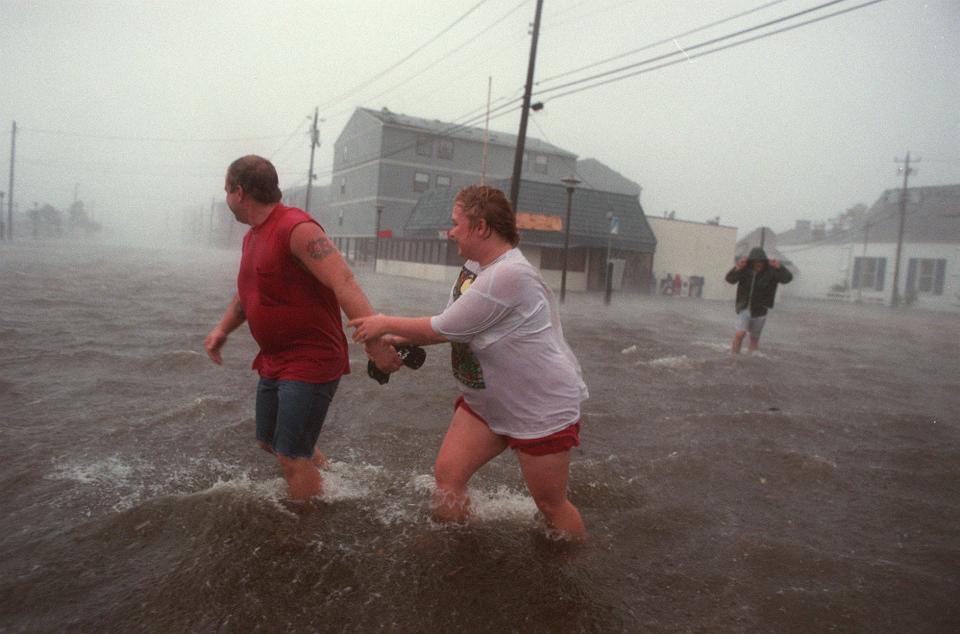
More: Remembering Hurricane Fran at 25, the storm that finished what Bertha started
"It was not so much a rainstorm. It was a windstorm," Armstrong said.
Fran killed 14 people and caused more than $5 billion in damage. More than 1.5 million people were without power. In the Wilmington area, around 75% of homes sustained damage.
Fran measured the second lowest barometric pressure of any hurricane in the area, at 28.39 inches.
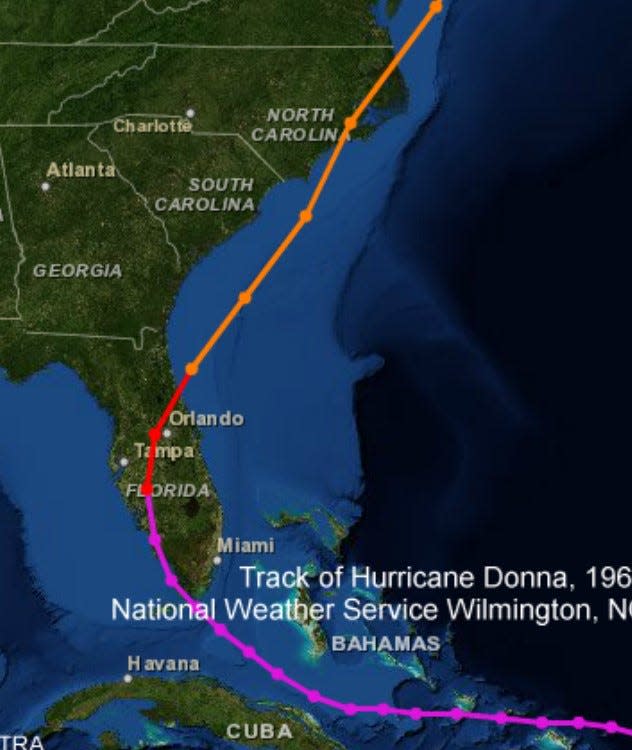
5. Hurricane Donna - Sept. 11, 1960
Hurricane Donna reached Topsail Beach as a Category 2 hurricane, bringing wind gusts more than 100 mph and tides 8 feet above normal.
Donna brought tornados that destroyed buildings inland and storm surge that significantly eroded Wilmington beaches.
More: A look back at Hurricane Donna
At 50-75 miles in diameter, Donna had an eye twice the size of typical hurricanes.
"It had a very, very unusually large eye for a hurricane in this area," Armstrong said.
Donna measured the third lowest barometric pressure of any hurricane in the area, at 28.41 inches.
Reporter John Orona can be reached at 910-343-2327 or jorona@gannett.com.
This article originally appeared on Wilmington StarNews: The worst hurricanes to hit Wilmington

